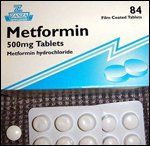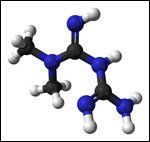ASCO 2011: Diabetes, Diabetes Drugs, and Cancer Risk: the Potentials for Prevention
As early as 1932, physicians noticed an apparent association between type 2 diabetes and increased cancer risk. In recent years, the epidemiological evidence of such an association has mounted steadily-especially with the emergence of large databases, which have allowed us to document the link.
As early as 1932, physicians noticed an apparent association between type 2 diabetes and increased cancer risk. In recent years, the epidemiological evidence of such an association has mounted steadily-especially with the emergence of large databases, which have allowed us to document the link.
In her presentation on Sunday, June 5th, Dr. Lorraine Lipscombe reviewed the epidemiological evidence for a diabetes-cancer association: the strongest associations are seen in liver, pancreatic, and endometrial cancers, and slightly less strong links are seen in colorectal, bladder, and breast cancers. Although it is possible that the trends toward a worse cancer prognosis in patients with diabetes may be due in part to differences in healthcare-or that lower survival rates may be attributable to diabetes itself-most researchers believe that there is either a direct or indirect mechanism of association between diabetes and cancer. Mechanisms that have been proposed include a direct association mediated by hyperglycemia, an indirect association mediated by insulin resistance (which is associated with inflammation, a known cancer risk), an indirect mechanism involving antidiabetes drugs, and a risk that is common to both diabetes and cancer (eg, obesity).

Metformin 500mg tablets

Ball-and-stick model of the metformin molecule, C
4
H
11
N
5
The evidence is especially strong for a link involving hyperinsulinemia. For example, one study showed that in women who had diabetes and who had received a breast cancer diagnosis, the risk of breast cancer was greatest in the 6 years just before their diabetes was diagnosed. Those 6 years correspond roughly with the “prediabetes” period, in which insulin levels are elevated. And in women with breast cancer, data show a direct relationship between higher fasting insulin levels and increased death and poor outcomes.
In addition, the antidiabetes drugs that are insulin-promoting (eg, the sulfonylureas) and insulin therapy itself are associated with increased cancer risk and a worse cancer prognosis. There has been particular concern about the new insulin analogues, especially insulin glargine, which appears to increase cancer risk 6- to 8-fold in some patient populations. (Data are conflicting about this risk, however, and there may have been a selection bias in the studies that showed the increase.)
One well-established antidiabetes drug, however, has an insulin-sensitizing mechanism of action, rather than one that is insulin-promoting. This is metformin, which is increasingly being looked at as a potential means of reducing cancer risk. Dr. Ann Thor presented preclinical evidence to demonstrate how metformin likely works to decrease cancer risk. She first discussed the various ways in which metabolic dysregulation alters the host to promote cancer. Nutritional stress (eg, caloric excess) results in reactive oxygen species exceeding physiologic need, which leads to a decrease in mitochondrial respiration and promotion of the Warburg effect; this in turn increases oncogene activation, growth factors, cell signaling, and DNA mutations. It is noteworthy, however, that this cellular response to nutritional stress is dependent on the cell’s p53 status. Those cells that are deficient in p53 have increased reactive oxygen species and upregulated pAKT, and are more likely to undergo glycolysis (instead of cell cycle arrest).
Metformin has been shown to increase cell cycle arrest and apoptosis, and to decrease glycolysis and cell growth; it works through AMP kinase and mTOR to increase mitochondrial metabolism. In particular, it impairs the growth of the p53-deficient cells that are especially susceptible to procarcinogenic transformation. It has other effects as well, including selective killing of cancer stem cells, and possibly an effect on angiogenesis. Triple-negative cells appear to be especially sensitive to metformin.
Metformin also appears to work in an indirect fashion, through its effect on the host. It reduces hepatogluconeogensis, which leads to less circulating insulin.
The importance of this preclinical evidence of metformin’s effects is underscored by strong epidemiological evidence. Metformin is associated with lower cancer incidences, increased cancer-related survival, and increased effectiveness and decreased toxicity of chemotherapy in a number of tumors.
The oncologic interest in metformin has exploded in recent years. Dr. Pamela Goodwin presented some of the highlights of the clinical information on the effects of metformin in cancer patients.
In one study in nondiabetic patients with colorectal cancer, low doses of metformin produced a near-significant reduction in aberrant crypt foci and a significant reduction in rectal proliferation. In a study of lung cancer patients with diabetes, those who were treated with metformin or thiazolidinediones (another class of insulin-sensitizing agents) were less likely to have metastases and more likely to live longer.
Several groups have done studies of metformin administered during a 2- to 3-week neoadjuvant “window of opportunity” in nondiabetic women with breast cancer. The interim results from the study being conducted by Dr. Goodwin’s group have shown that metformin produces a reduction in insulin levels and an increase in apoptosis. The potential promise of metformin in breast cancer is also currently being explored in a number of other studies. Dr. Goodwin briefly reviewed the NCIC MA32 trial, which is in the process of recruiting 3,582 women with operable breast cancer receiving any standard therapy. The participants will be randomly assigned to receive metformin or placebo for 5 years, and the trial will look for evidence of both direct and indirect effects of metformin.